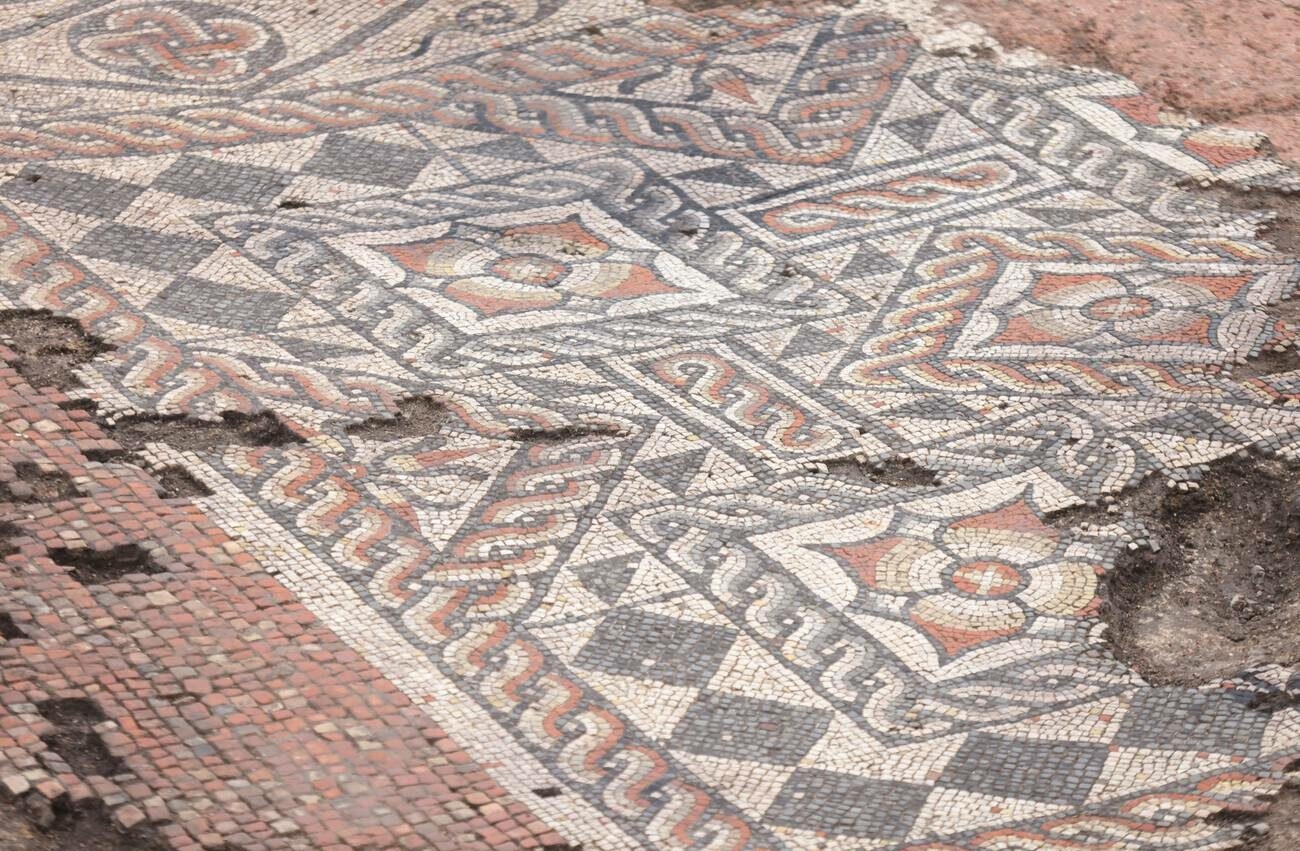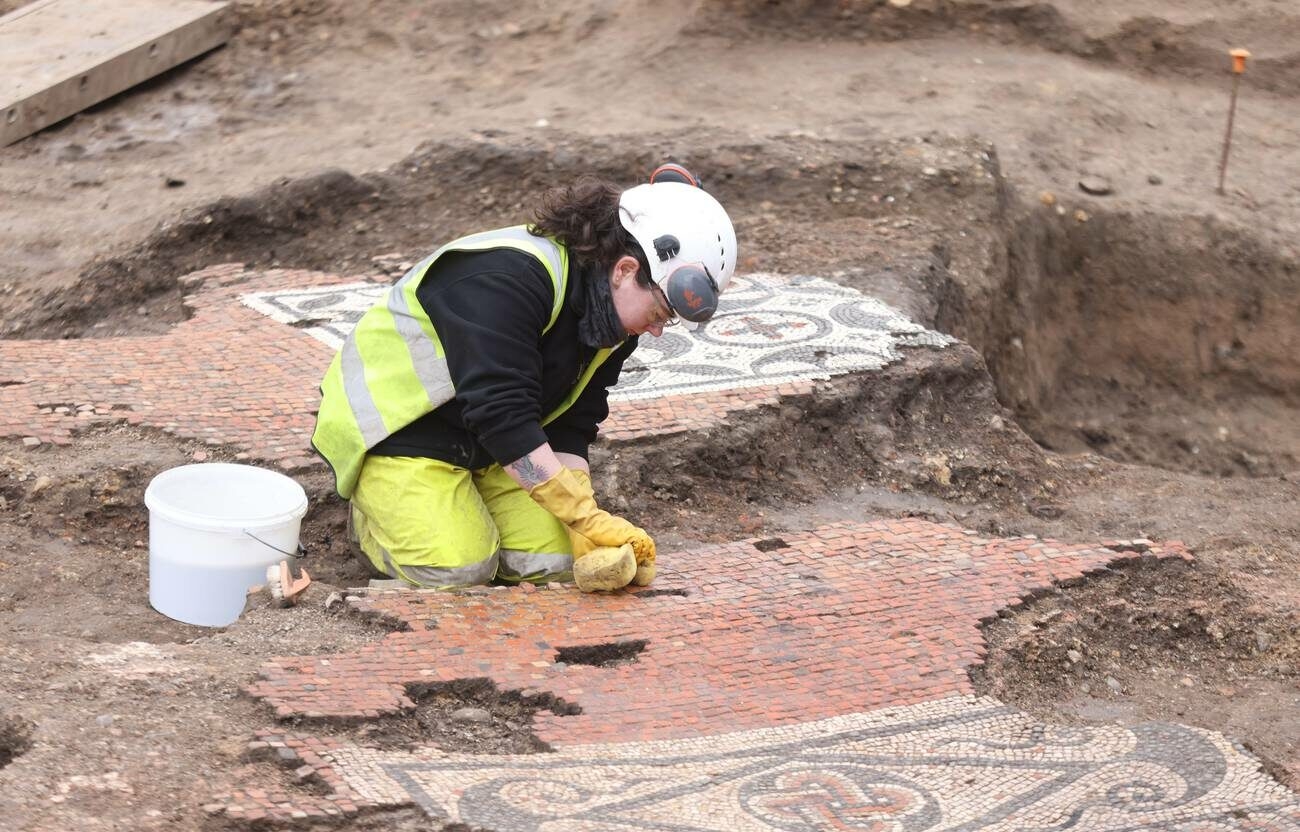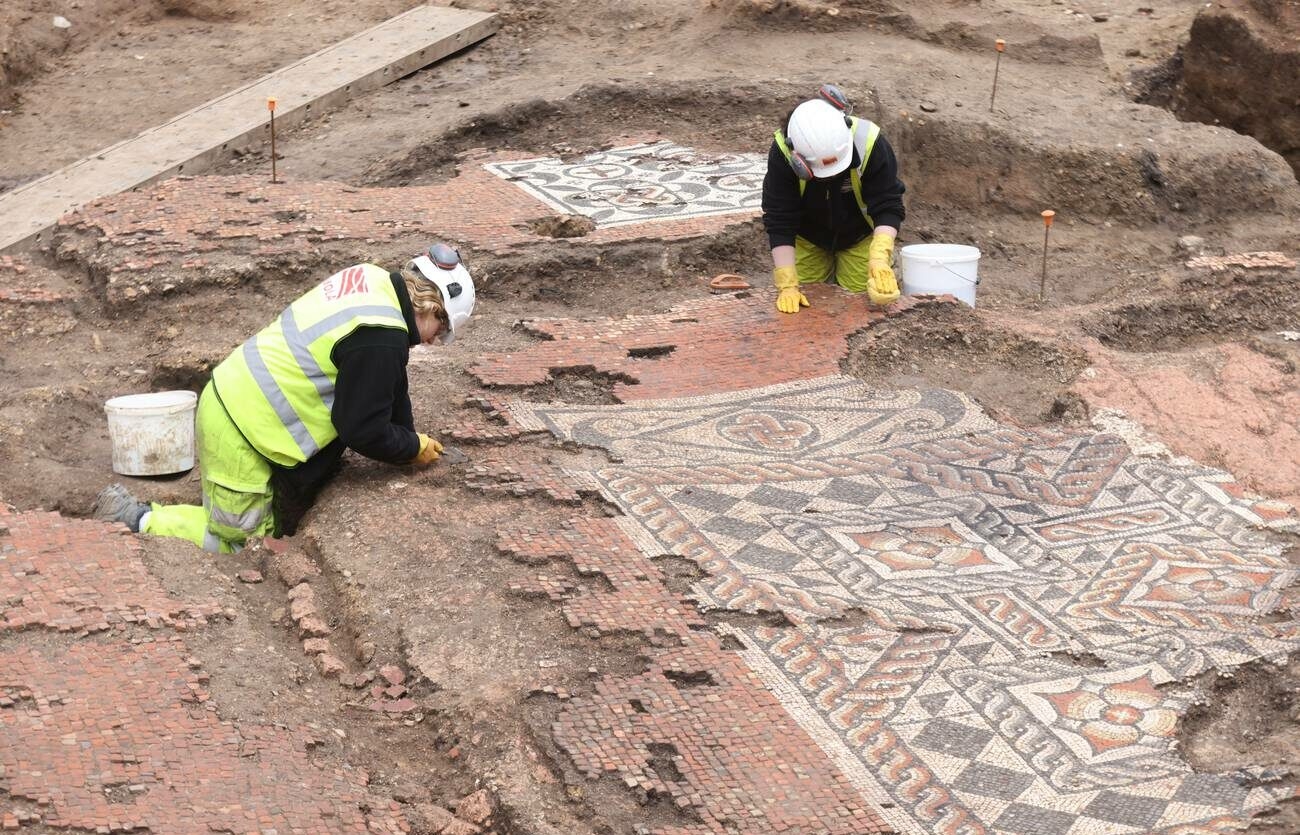A Roman mosaic recently found in London is the largest one to be discovered in more than 50 years, the Guardian reports.
It was found some weeks ago at a construction site near London Bridge - in an area that is thought to have been a site for officials of high rank to congregate in while being served food and drink many centuries ago.
The mosaic dates from the late second century to the early third century, and its flowers and geometric patterns were described by Antonietta Lerz, site supervisor of the Museum of London Archaeology (Mola), as a "once-in-a-lifetime find".

Lerz said, per BBC News: "This is a once-in-a-lifetime find in London. It has been a privilege to work on such a large site where the Roman archaeology is largely undisturbed by later activity-when the first flashes of color started to emerge through the soil everyone on site was very excited."
The 26-ft mosaic will be lifted at some point this year to undergo preservation and conservation, with the ultimate aim of displaying it to the public.

The main panel is decorated with colorful flowers surrounded by a design resembling a twisted rope. It also features geometric elements and lotus flowers in the main mosaic and a smaller panel close by.
David Neal, an expert in Roman mosaic, believes the design of the larger panel was the work of a group of mosaicists known as the Acanthus group, who were known for their distinctive style. The smaller panel resembles one discovered in Trier, Germany, which appears to suggest that London-based artisans traveled to other lands.

Mola archaeologists, who had been working at the site since June last year, believe the room that contained the mosaic was a triclinium, made up of dining sofas on which people would relax while eating and drinking. It is thought that the walls would have been decorated in a similarly lavish style.
The triclinium is believed to have been part of a Roman mansio, which was essentially a high-end motel that offered accommodation and dining to state officials and couriers traveling to and from Londinium across the river.














